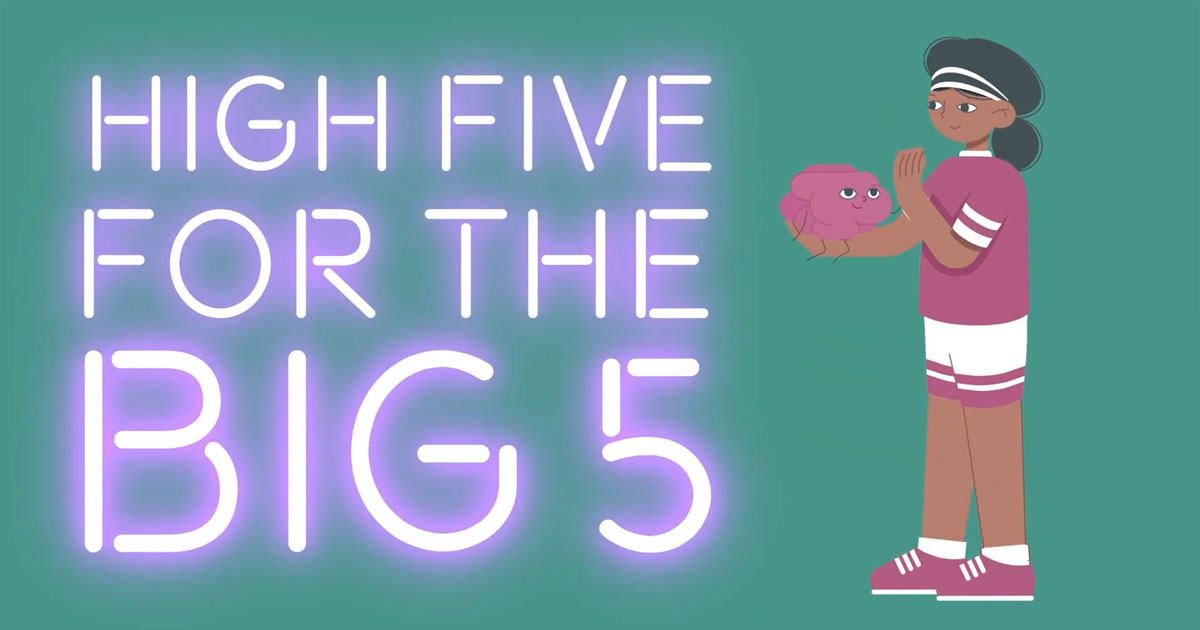
I am heartened to learn of a concussion awareness intiative of Macquarie University and the Australian Chronic Traumatic Encephalopathy (CTE) Biobank, in partnership with Sydney FC, called The Concussion Big 5.
As I have been writing about for a long time, Macquarie University rightly points out that, “concussion is a common cause of hospitalisation in athletes in Australia, and can be seen in all codes of football, in hockey, netball, extreme sports, equestrian, surf lifesaving, cycling, and other contact and collision environments.”
The Concussion Big 5, as captured by this video and initiative are:
- Slump – lying motionless, unconscious or knocked out.
- Sway – appearing wobbly, unsteady or falling over.
- Slow – walking slowly, wandering or delayed movements.
- Stun – confused, appearing stunned or behaving unusually.
- Slur – slurred speech, slow speech, or responding poorly.
Singling out these symptoms is very important, so that fellow players, coaches, and family members can be aware of the full picture of concussion events, remembering that, as the researchers point out, “multiple concussions can have a cumulative effect, and down the track, players can end up with serious and ongoing effects, including cognitive and behavioural problems, chronic headache, and mental health concerns. In the most severe cases, this results in a diagnosis of dementia called chronic traumatic encephalopathy (CTE).”
Introductory video explains The Concussion Big 5
Here is the excellent video about what to look out for if your child or a teammate has been concussed.
Remember concussion does not equate with loss of consciousness.
Being mindful of concussion in children outside of sport
Initiatives like the Concussion Big 5 will do much to attract attention to injuries arising from contact sports, but it’s crucial we remember that children in the playground are also at risk, should they hit their heads.
Likewise, when adults fall over hit their heads, or fall and not hit their heads, there is still a degree of force that causes concussion of the inner ear, etc.
We have known for many decades that head and neck trauma can result in inner ear trauma, which is why my Dizziness and Balance Disorders Centre has been treating children and adults for decades. In fact, such treatment is an integral part of our service to the community, typically presenting as Traumatic Vertigo or TV.
TV is amongst the most frequent sequelae associated with head and neck injuries in children and adults. It is NOT a clinical entity. It is a common cause for a heterogenous group of peripheral labyrinthine (inner ear) and central (brain) vestibular disorders.
With our approach, we can distinguish several typical types of post-traumatic vertigo which comprise most cases. They are:
- Post-traumatic benign paroxysmal positional vertigo (BPPV) from blunt head trauma or whiplash (neck) injury.
- Post-traumatic otolithic vertigo without BPPV. Labyrinthine concussion causes loosening and dispersion of otoconia from the macular bed, resulting in unequal loading of the left and right otoliths that affects the symmetrical tonal balance between the ears. Hence, postural sway is increased after headshaking in dizzy patients who have suffered concussion. They rely more on visual cues for stability than normal subjects. This transient deviation of subjective visual vertical has been measured in the clinic and provides evidence for post-traumatic otolithic vertigo without canalolithiasis (BPPV).
- Labyrinthine and/or eight nerve dysfunctions may be caused by fractures of the temporal bone or blunt head trauma.
- Non-explosive blast injury of the ear caused by a blow or slap to the ear can result in hearing loss, tinnitus, vertigo, disequilibrium, earache and otorrhea.
- Perilymph fistula has been reported following blunt head trauma, even mild trauma, or transverse temporal bone fractures.
- Delayed endolymphatic hydrops may occur with labyrinthine concussion and temporal bone fractures.
- Central vestibular syndromes may occur due to concussion of the vestibular nuclei or central vestibular pathways, in particular, the caudal brainstem.
In summary, those who have acquired traumatic vertigo associated with head and/or neck injuries need a careful and thorough auditory and/or vestibular function assessment before establishing a treatment regimen.
This involves a Multi-Disciplinary Team Approach – neurologist, neuro-otologist, Ear, Nose and Throat specialist, Neuro-ophthalmologist, Vestibular (Neuro-physiotherapist) physiotherapist, head and neck musculoskeletal physiotherapist and other health practitioners (e.g., clinical psychologist, optometrist, orthoptist) as required by the individual patient.
Thanks to the Concussion Big 5, let’s hope more light is shone on this often overlooked, misunderstood, or even dismissed, area of injury and treatment.
